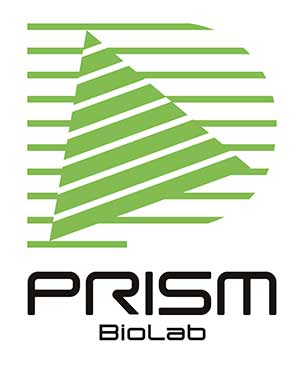Peptide-based molecules and peptides themselves, especially cyclic and natural peptides, have been approved for a variety of disease treatments including cancers.1) Anti-cancer peptides (ACPs) have long been investigated in mostly academic field and a number of natural ACPs have been disclosed so far.2) ACPs are small peptide with a selective toxicity against cancer cells line a usual small-molecule-based or antibody-based anticancer agents.
However, just a small number of the ACPs identified in basic research have been taken into clinical trials and approved so far. This is because peptides always have issues for patient treatment. PepMetics®, for sure, would solve at least some of the issues.
ACPs are classified into four categories, differentiated by the peptide structure and chemical nature. α-helical, β-pleated and random coil ACPs are peptides with the secondary structures of proteins.
Generally speaking, α-helical ACPs have short chain lengths compared to other classes and a variety of sequence patterns are found in them. Due to the nature of the potential interaction against a biomolecule with α-helices, α-helical ACPs are of the topmost interest in recent years.3)
A β-pleated sheet ACP generally has a couple of disulfide bonds to fix itself a planner structure. Random coil ACPs have no fixed structure and so far the ACP from this class have proline and glycine-rich sequences.
A cyclic ACP have a cyclic structure with a disulfide bond or head-to-tail cyclization. Cyclic peptides are currently known to have a wide range of biological activities, including anticancer.
In terms of the mechanism of action, An ACP have one or more of the following activities: membrane destruction, induction of apoptosis, inhibition of tumor angiogenesis, immune response regulation.
ACPs intrinsically have on the uptake with the aid of peptide transporters. Advantageously, ACPs sometimes exert obvious selectivity between normal and cancer cells when the upregulation of these membrane proteins in cancer cell lines.
However, the metabolic instability is always the disadvantage of ACPs due to the presence of labile peptide bonds.
In order to develop a drug from ACPs of interest, chemical modification of the original, natural peptide is a solution. But at least now the direct modification of peptides is not easy and takes long time and lots of medicinal chemists’ resources for the optimization.
Still, ACPs with highly promising activity is one of the focused fields of drug discovery and development. The main strategy is the modification of ACP to another molecule to achieve the stability as well as other pharmacokinetic and pharmacodynamic improvement.Basic approaches for reconstruction are replacement and substitution amino acids.
For the side chain modification, phosphorylation, glycosylation, palmitoylation and cholesterol attachment are utilized so far. Not only the cytotoxicity but also cell penetrability, membrane affinity and conformational stability can be controllable in a reasonable manner.
However, a slight switch of a particular residue often results in loss of activity or selectivity, as most pharmaceutical scientists experience.
We would like to say PepMetics® is a useful solution to overcome the issue by drastically changing the main backbone of α-helical and cyclic ACPs.The peptidomimetics of ACPs can readily be available because PepMetics® allows what we call “sequence mimetics”. Just mimicking the sequence of a biologically active peptide, PepMetics® has a potential to find a hit, which was demonstrated by the collaboration with GeneFrontier Corporation.4)
There is still a number of ACPs for potential application toward therapeutics. We appreciate all you to collaborate to develop useful anti-cancer drugs.
If you are interested in our straightforward strategy in combination with ACPs, please contact us for more discussion.
1) https://doi.org/10.1039/D1CB00154J
2) https://doi.org/10.1186/s11658-022-00332-w
3) https://doi.org/10.1098/rsob.200004
4) https://doi.org/10.3390/ph15121506

